Bungee Cords
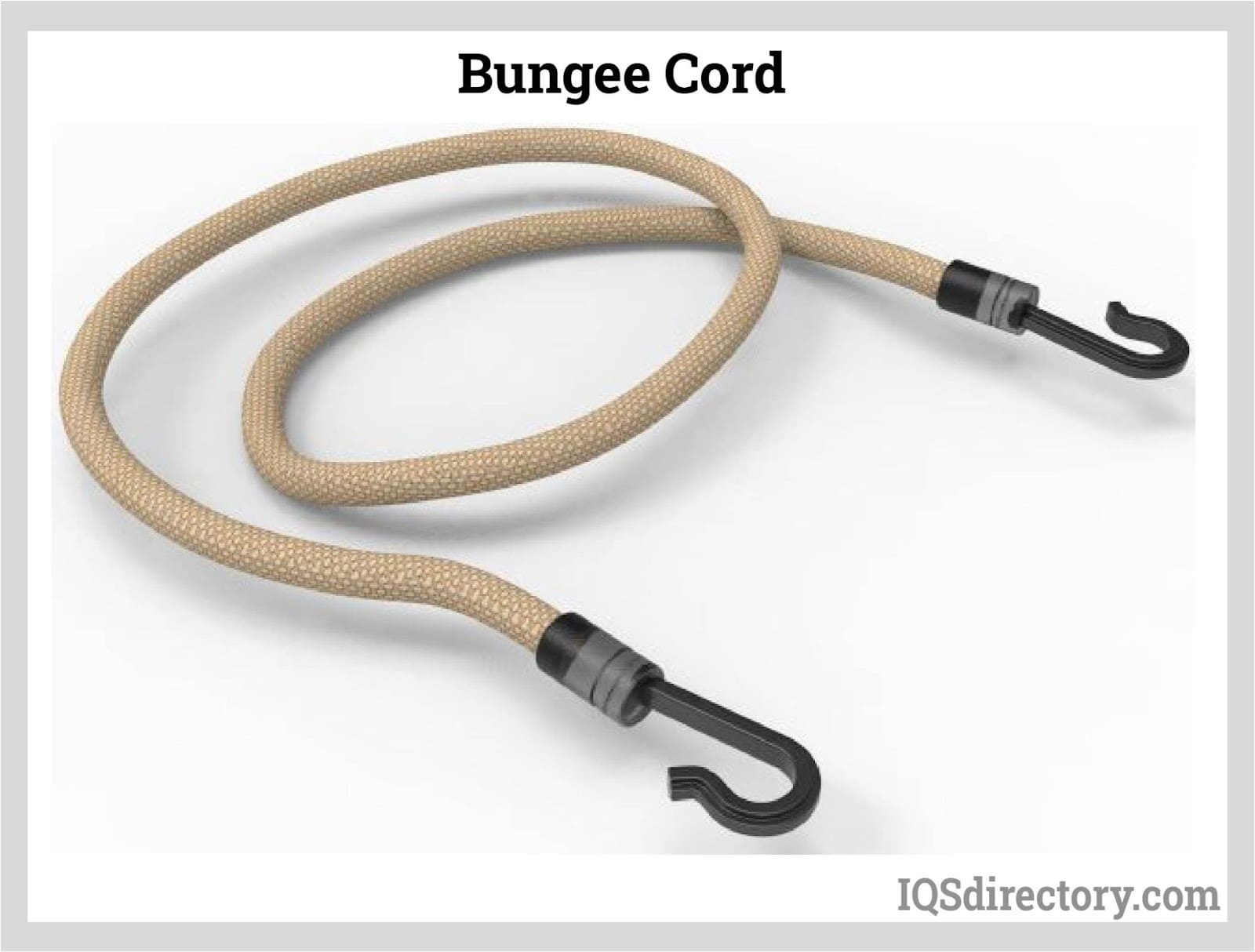
A bungee cord is a rope that is composed of two or more elastic strands coated with a woven fabric. It has hooks that are placed on both ends. A bungee cord is also known as shock cord and elastic cord...
Please fill out the following form to submit a Request for Quote to any of the following companies listed on
This article takes an in depth look at high strength ropes.
This will cover topics such as:

High Strength Rope is strands, fibers, piles and yarn joined together to form a strong and a large structure. These strands or fibers are either twisted or braided to produce high tensile strength rope that is stronger and more resilient. High strength ropes are also used for lifting and dragging purposes. Ropes were used by mankind since prehistoric times for different purposes such as tugging, hunting, climbing, securing things, fastening, and carrying things. In ancient times, natural fibers were used to construct ropes. In the 1950s, synthetic fibers started to be used in rope making. There are two types of high strength rope. These are natural and synthetic rope.
Natural ropes are crafted from environmentally friendly materials that do not produce harmful byproducts during manufacturing. Common natural fibers used include cotton, hemp, and sisal. When natural fibers are combined with synthetic fibers, the resulting rope is stronger and more durable. Although natural fiber ropes are robust in use, they can be susceptible to damage from water, mildew, mold, or UV light. They are resistant to high heat but can burn when exposed to open flames. Natural fiber ropes may shrink when wet and not return to their original size or shape, which can limit their applications. However, their non-slip characteristics make them effective for securing objects.
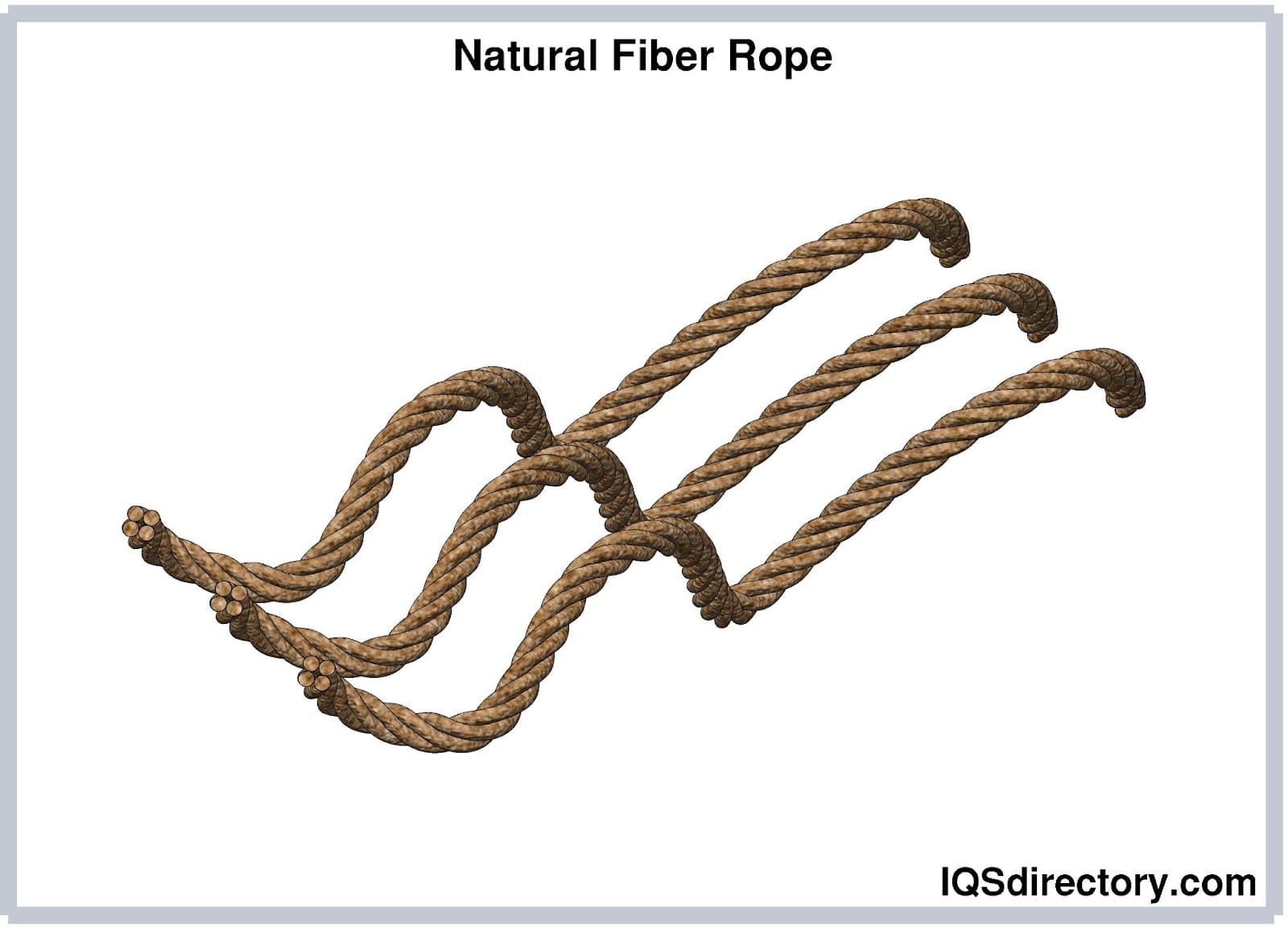
Synthetic fiber rope is made from synthetic or manmade materials such as nylon, polyester, polypropylene and multiple other synthetic materials. Synthetic ropes are stronger and last longer than that of natural fiber. Their average life span is about 30% more than that of natural fiber rope. Wet environments can’t cause damage to these ropes. Another beneficial aspect is that they are not prone to damage from mildews, UV light, or mold, making them useful in an open atmosphere. Synthetic ropes do not perform well when exposed to heat because it will melt these ropes. They are not environmentally safe because of harmful by-products emitted in the atmosphere during the production process. But they are strong and can be used easily for lifting or towing purposes.
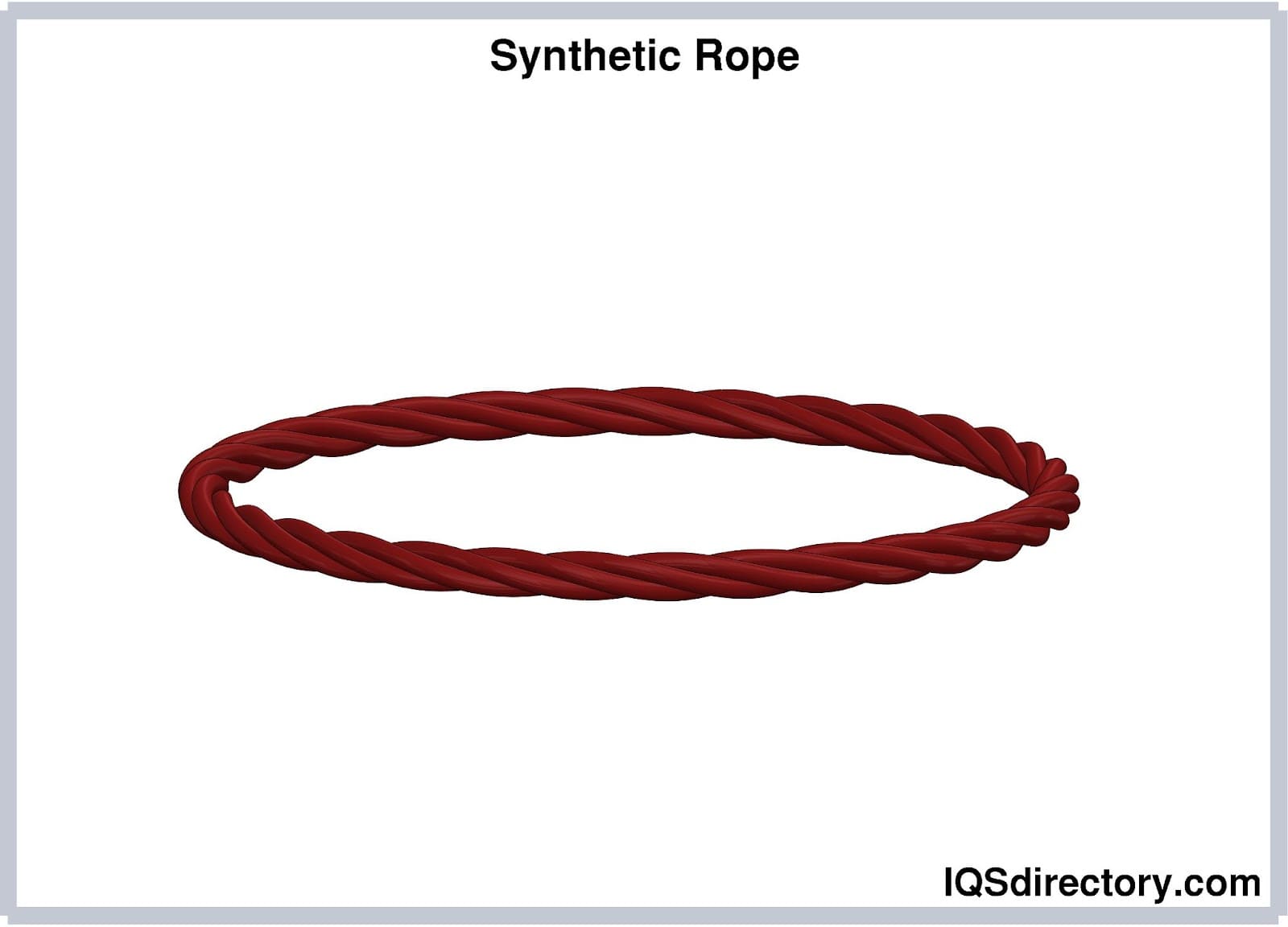
High strength ropes are available in various construction types, defined by their twisting or braiding patterns. These ropes are categorized and named based on their specific construction methods. Each style of rope construction is detailed below:
Single braid 12 strand ropes are made of HMPE with a high strength to weight ratio and better break strength than wire rope. It is made by interlocking braids, which makes the rope very strong. Single braid 12 strand rope is a good choice for heavy pressure or weight to be pulled or lifted. The braiding process involves braiding twelve strands of HMPE fiber using a complex pattern of over and under braiding that securely interlocks the fibers. For best results and prevention of failure, single braid 12 strand ropes are jacketed with an elastomer for greater protection.
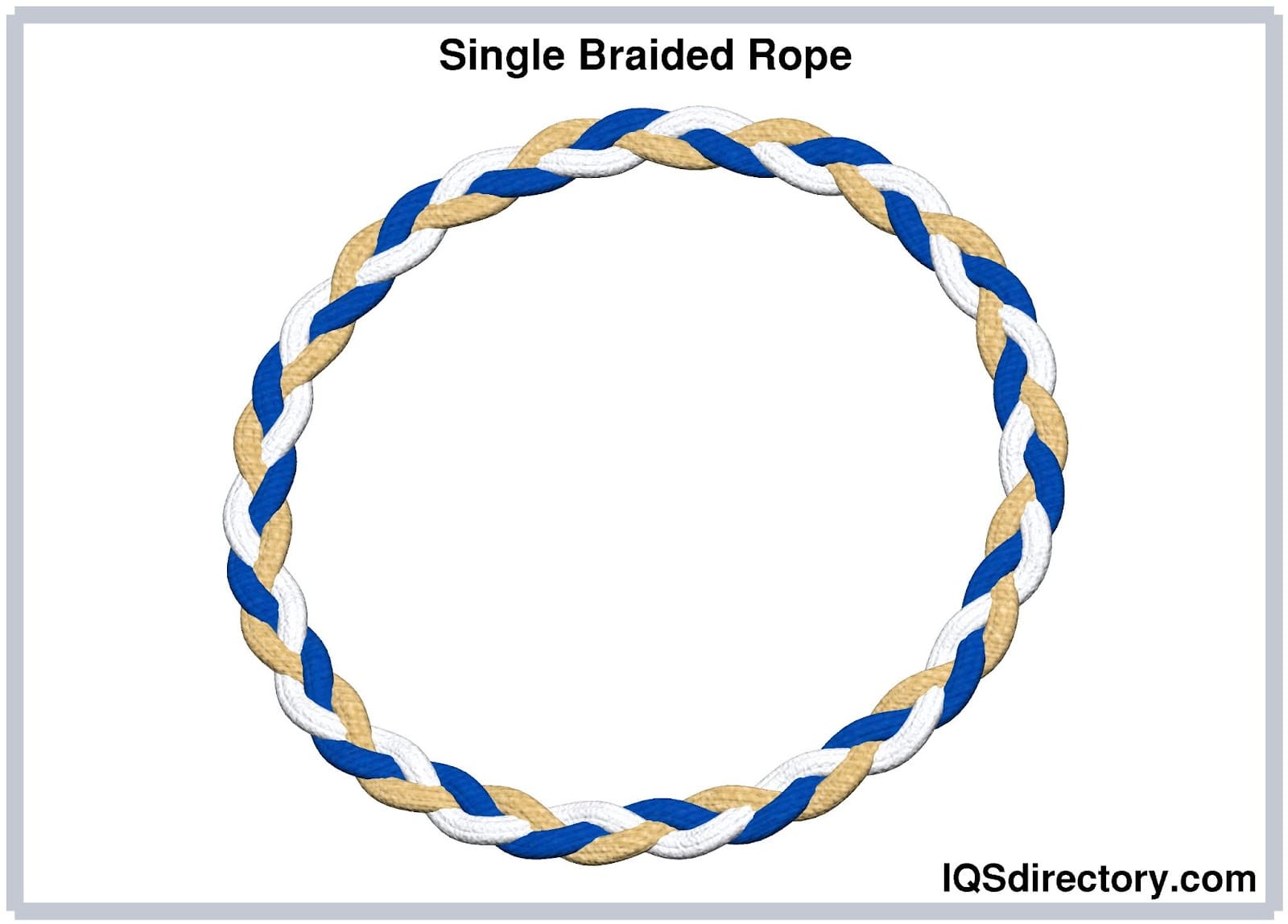
Also known as square braid rope, this type is coarser compared to other twisted ropes. It consists of approximately four sets of strands, which are twisted and interwoven to create a braided structure. These ropes are highly flexible and strong, making them easy to knot. However, a drawback is that all the strands are exposed to the environment because they are twisted around a central core, making them susceptible to damage.

Twisted rope, often referred to as laid rope, is ideal for applications requiring splicing. It is constructed by twisting strands together in the same direction. Typically, three of these strands are twisted in opposite directions to form a braided structure, enhancing grip strength. These ropes tend to be less flexible and are prone to kinking if not handled properly. They are commonly used for dock lines and towing operations.
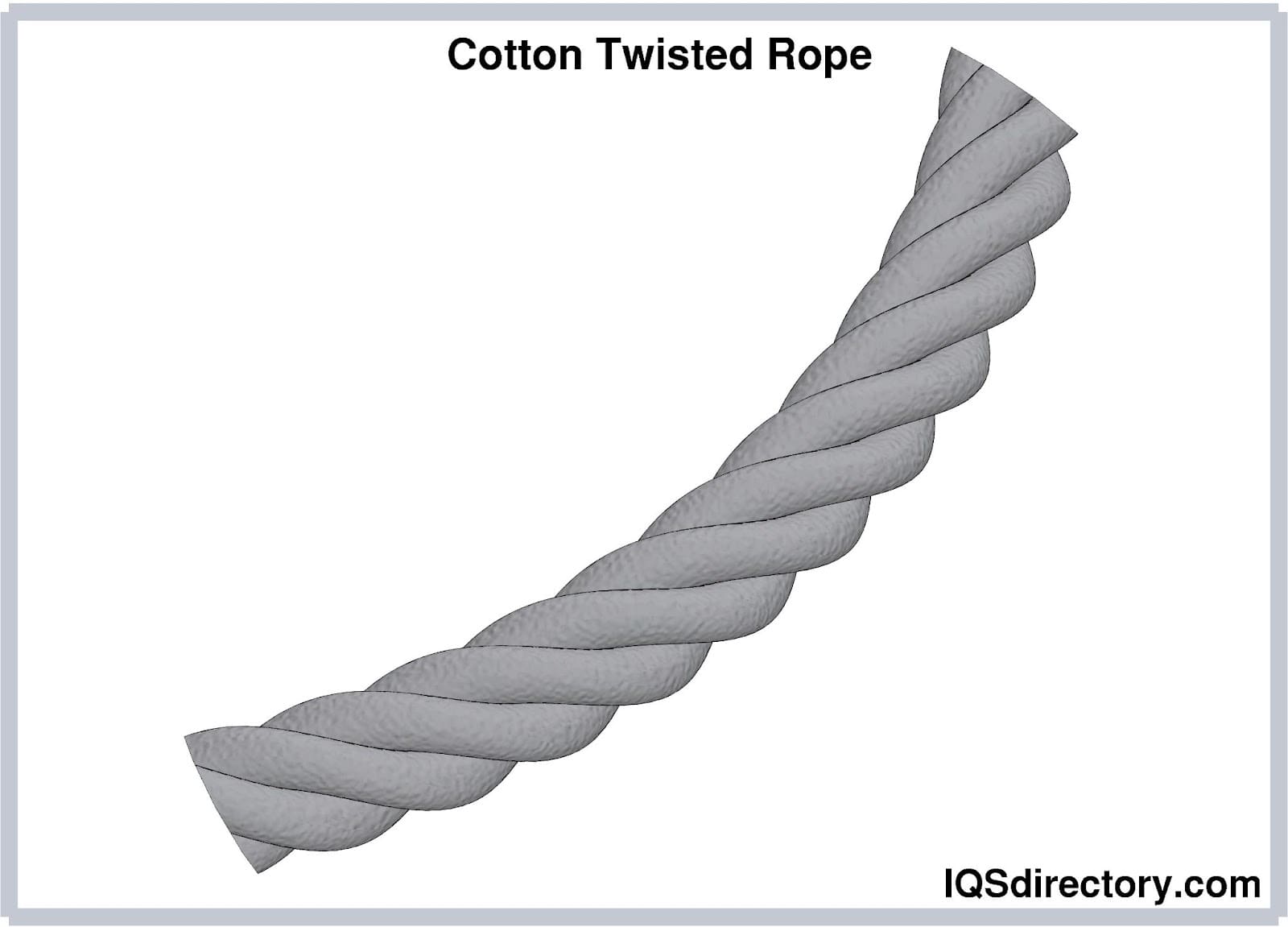
Double braided rope is an excellent option when strength and durability are required. It is constructed by coiling double braided strands around a double braided core, offering enhanced stability and flexibility. This type of rope is abrasion-resistant, making it ideal for marine environments but less suitable for manufacturing sites. Double braided ropes are highly resilient and resistant to kinking, with their high strength derived from the protective double braiding surrounding the core.
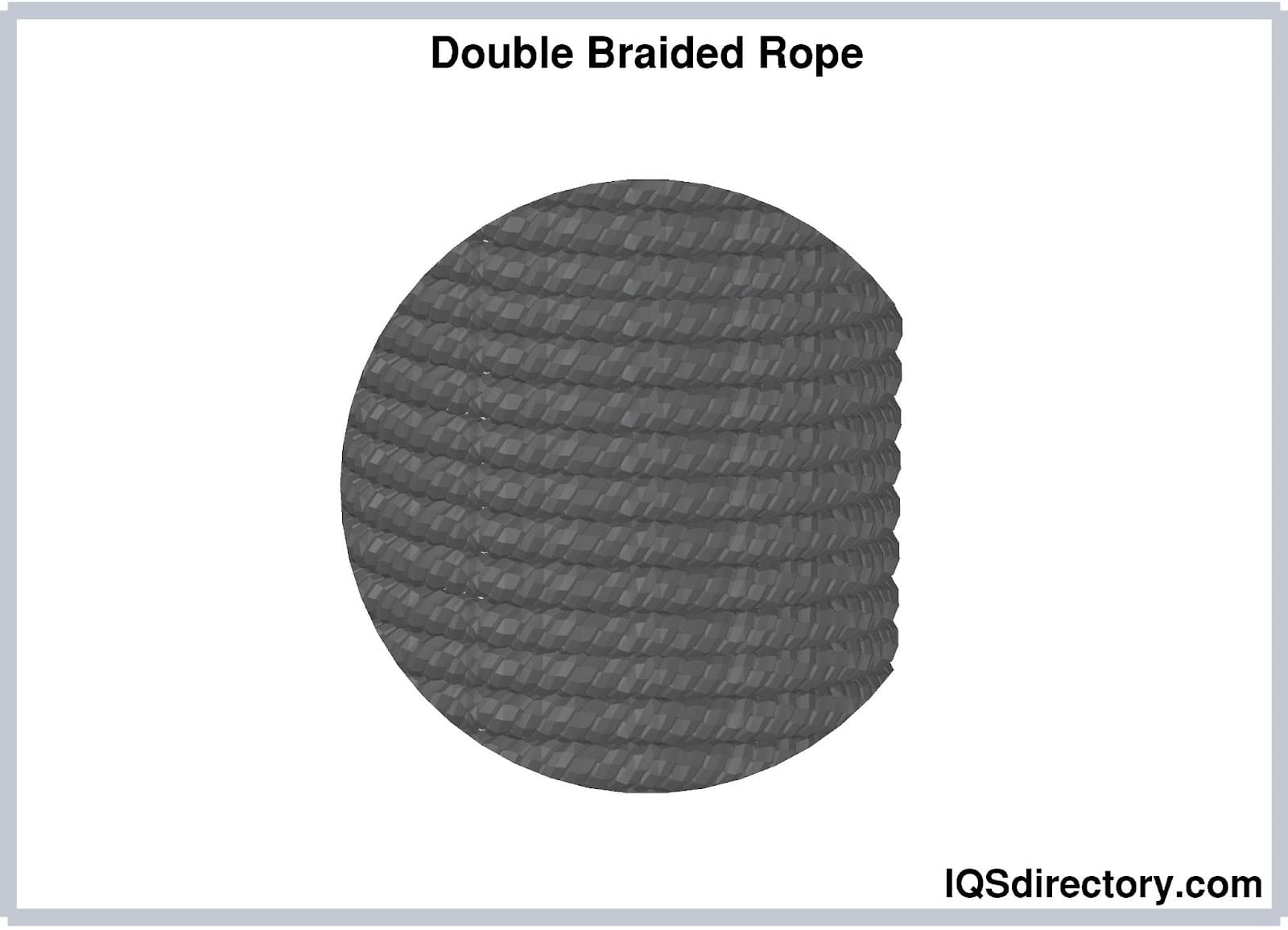
Hollow ropes are empty or hollow from the inside and can be spliced easily. It is a lightweight synthetic rope that can be used for ski towing and anchor lines because these are water resistant.
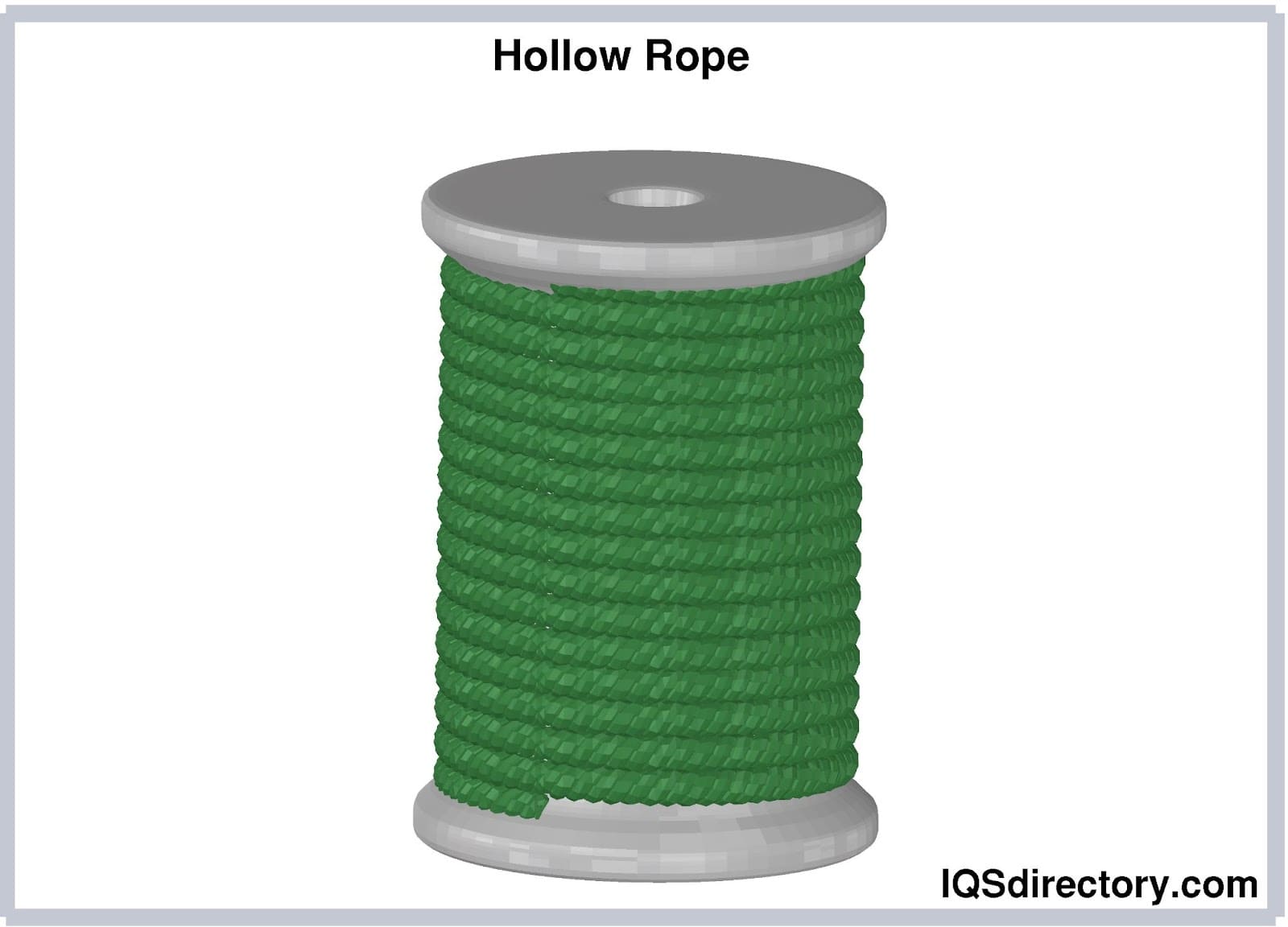
Diamond braid ropes are crafted by meticulously braiding fibers around an inner core to create a firm and rigid structure. This precise and tight braiding results in a higher cost compared to other rope types, but it also provides a durable and attractive finish. These ropes are known for their durability, roundness, and firmness, making them suitable for demanding conditions. Additionally, diamond braided ropes are easily spliced, which makes them compatible with other types of ropes.
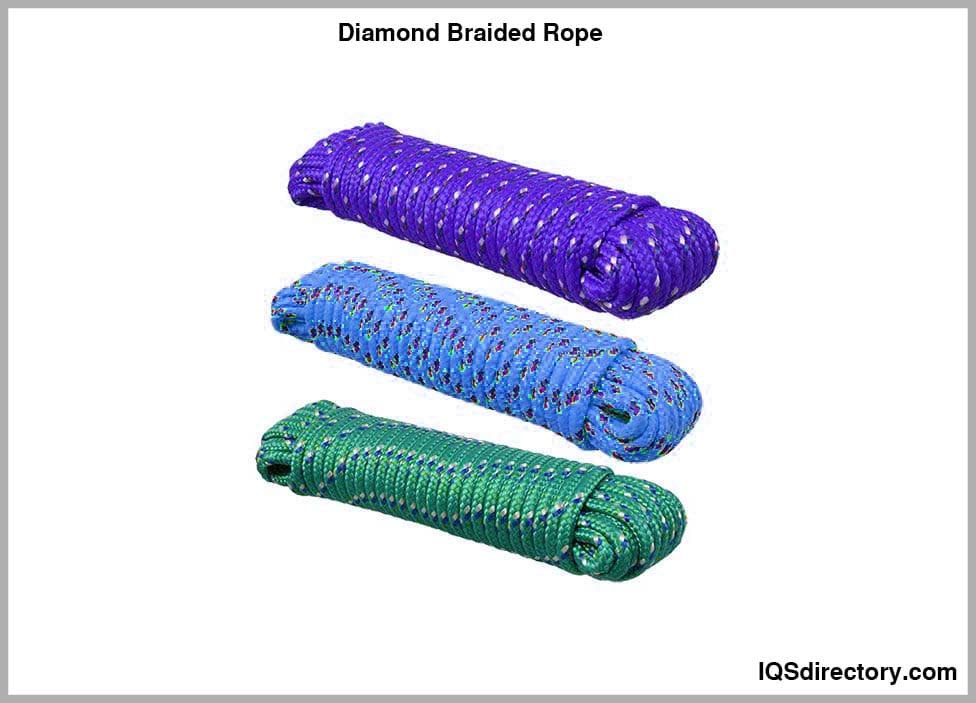
Jacketed rope features a protective covering that shields the rope from abrasion and UV damage. This tough outer layer, made from synthetic materials such as urethane elastomers and thermoplastic elastomers (TPE), acts as a barrier against friction and environmental effects. The jacket is applied as a resin layer with a specific thickness and can also be color-coded for easy identification.
Jacketed ropes are particularly useful for outdoor applications, as they help prevent the rapid degradation of rope fibers due to exposure to the elements.
Various materials are used in the production of high strength ropes, with several popular options highlighted here:
These are the materials commonly used in the production of high strength ropes. Each material is further classified into various types, which will be covered in detail in this chapter.
Aramid, also known as poly(para-phenylene terephthalamide), is a high-strength fiber with minimal stretch, notable for its resistance to high temperatures and creep. It is one of the earliest and most effective fibers used in rope manufacturing, with examples including Technora, Twaron, and Kevlar. While aramid fibers are strong, they have limited abrasion and UV resistance and are often wrapped in additional materials like polyester for protection. Meta-aramids (such as Nomex and Teijinconex) offer excellent heat and abrasion resistance, but para-aramids generally provide greater strength than meta-aramids.
High modulus polyethylene (HMPE) ropes are among the strongest available and come in various grades. HMPE fibers feature long molecular chains, making these ropes exceptionally durable and stronger than steel, with high impact resistance. HMPE ropes have a strength-to-weight ratio that is eight times greater than that of high-strength steel, making them one of the most popular rope fibers worldwide.
VECTRAN, known as aromatic liquid crystal polyester, is a high-strength material with low stretch properties similar to aramids and notable resistance to heat.
Zylon, commercially known as PBO (poly(p-phenylene-2,6-benzobisoxazole)), is a recently introduced material in the rope industry. It is an exceptionally strong fiber with minimal stretch and excellent high-temperature resistance. Like aramids, Zylon requires protection from UV light and abrasions.
Polyester is one of the most effective synthetic materials used in the rope industry, offering exceptional resistance to water, UV light, and abrasion. These attributes make polyester an excellent choice for reinforcing other materials and enhancing their durability. Polyester has a density of 1.38, a melting point of 260°C, and a breaking extension of 12%.
Nylon, or polyamide, is a synthetic material known for its superior strength when dry compared to polyester. However, when wet, nylon can lose up to 10% of its strength. While it offers good abrasion and UV resistance, its notable feature is its stretchability. Nylon can stretch up to 30%, making it ideal for applications requiring pressure resistance. Its relative density is 1.14, and it has a melting point of 220°C.
Polypropylene is a lightweight material with a density of 0.91, allowing it to float on water. It offers moderate resistance to UV light and abrasion. Although its breaking extension is similar to polyester, polypropylene is generally weaker. It is highly resistant to chemicals and has a melting point of 170°C.
Polyethylene shares many characteristics with polypropylene, but it offers slightly better UV resistance. With a relative density of 0.97 and a melting point of 165°C, polyethylene is a comparable yet distinct option.
PEEK, or polyetheretherketone, is a polymer from the ketone family known for its outstanding dimensional and thermal stability. It is highly resistant to severe chemical and abrasive conditions. Zyex PEEK fiber, in particular, is renowned for its exceptional durability under high temperatures, chemicals, and heat.
Various types of ropes are manufactured from these high-strength fibers and find application across numerous fields. Examples of high-strength fiber products include Kevlar, Twaron, Technora, Dyneema, Spectra, Polyester, and Nylon. These will be explored in detail here.
Due to their strength, stiffness, hardness, and thermal stability, aramid fibers are the best option for many purposes. Kevlar rope is known for its low shock resistance properties. If kevlar ropes are subjected to shock, they are easily damaged. It is for this reason that Kevlar ropes are normally jacketed since they break down rapidly when exposed to shock and the elements.
Kever’s chemical structure reveals it as a polar molecule with a lengthy crystalline formation that significantly contributes to its strength. While this polarity allows Kevlar to bond with substances like epoxy and water, these bonds can sometimes be detrimental. For instance, water can easily wet Kevlar, potentially affecting its performance.
Kevlar fibers are interconnected, and their strong bonding capacity with other molecules imparts aramids with distinct properties. The physical characteristics of Kevlar include:
Kevlar ropes are lightweight and resistant to chemicals, making them an excellent alternative to steel cables. However, they are susceptible to UV degradation, necessitating a protective cover. Typically, the core is composed of aramid rope, while the outer layer is made of UV-resistant material like polyester. Kevlar ropes are extensively used in boating applications. Despite their strengths, they are not ideal for climbing due to their vulnerability to shock loads, which can cause sudden breakage. They are, however, effectively used in winches, suspension bridges in Scotland, and guy wires for hydro towers. Their high heat resistance also makes them a viable substitute for asbestos in various applications.
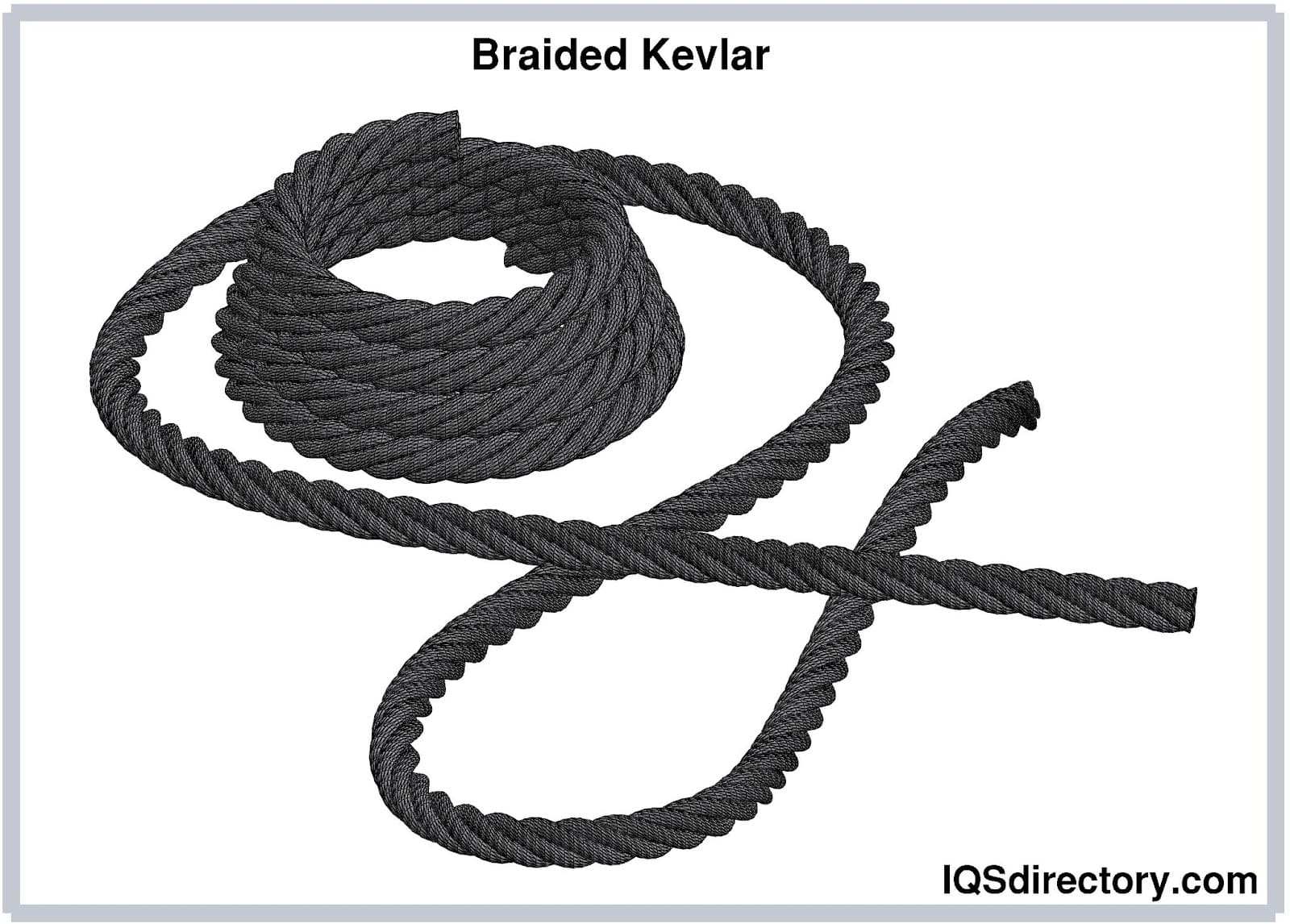
High modulus polyethylene, often referred to as high-performance polyethylene (HPPE), is known in the sailing and boating industries under the names Spectra and Dyneema.
HMPE's chemical structure features long molecular chains with no additional groups, which prevents other molecules from interacting with it chemically. This configuration results in a robust material that can stretch easily. HMPE does not attract water, chemicals, or microorganisms, thus remaining dry and non-sticky. The manufacturing of Dyneema and Spectra involves a process known as gel spinning.
High modulus polyethylene stands out due to its distinctive chemical structure, which imparts various unique properties. These include:
HMPE is a robust, lightweight fiber that can float on water. It offers excellent resistance to abrasion, chemicals, and UV light. This fiber is utilized in high-performance sails and rigging for yachting. Additionally, high modulus polyethylene is employed in body armor, vehicles, cut-resistant gloves, climbing gear, fishing lines, paragliding equipment, spear lines, bow strings, parachute suspension lines, and various other applications. Spectra, a type of HMPE, is also used for towing and winching, particularly in marine environments due to its buoyancy.
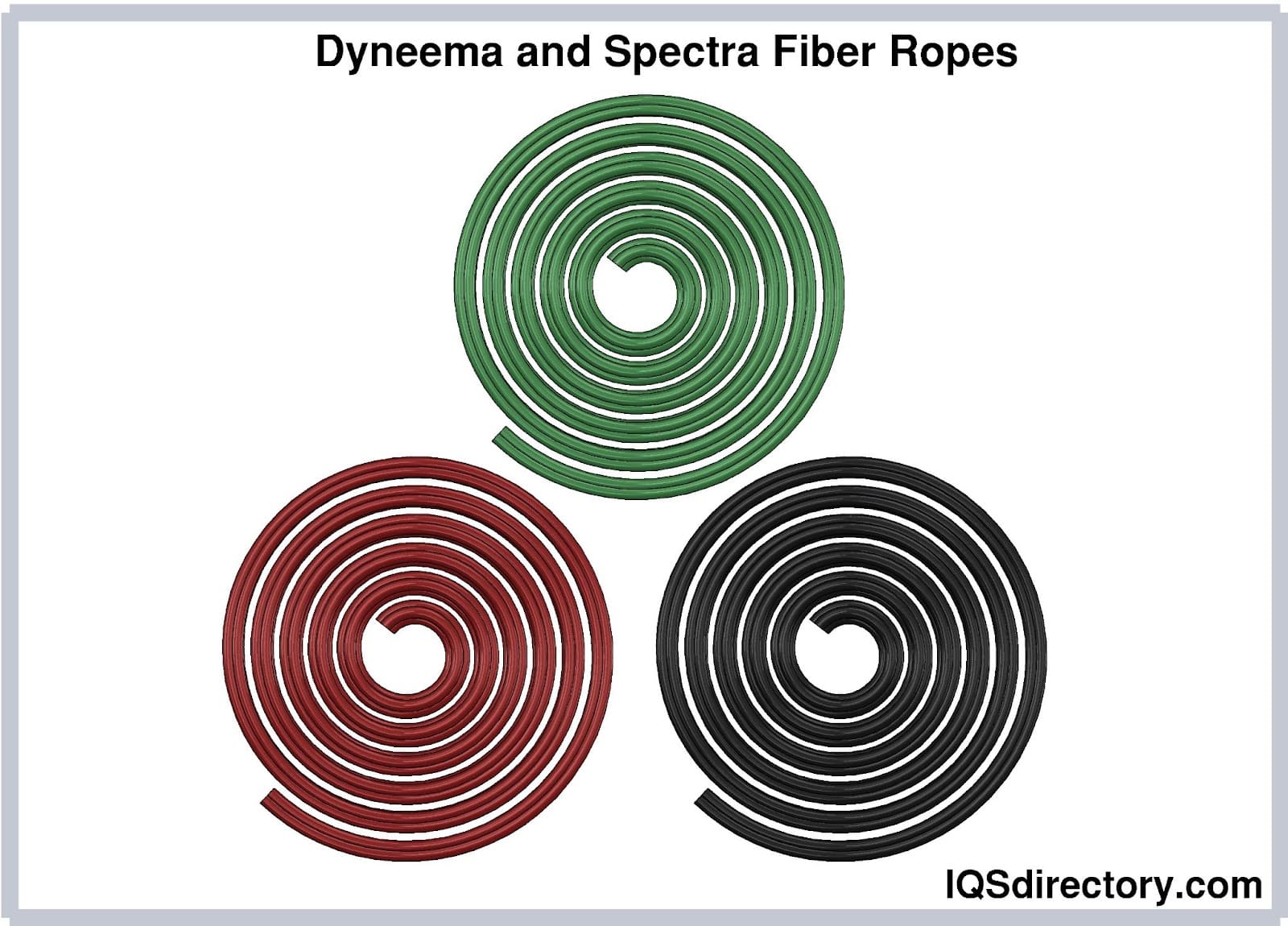
Terylene, Dacron, and Trevira are commercial names for polyester fiber. Polyester fibers are favored for boat lines and sailing due to their durability, flexibility, and cost-effectiveness. These fibers are very thin, with a diameter of 0.023 mm, and are typically white. It is generally challenging to differentiate between nylon and polyester.
Polyester is an excellent synthetic fiber for various applications where other fibers might fail due to its superior UV and abrasion resistance and its stiffness. It is extensively used in making sheets, sailing boats, and ropes for mooring or winch lines. Unlike other fibers that melt at high temperatures, polyester has a high melting point, making it suitable for such conditions. It functions well as a shock absorber and is effective on blocks and capstans where low creep is crucial. Additionally, polyester is used in protective layers for other fibers like aramids, allowing them to endure longer in outdoor environments without significant wear.
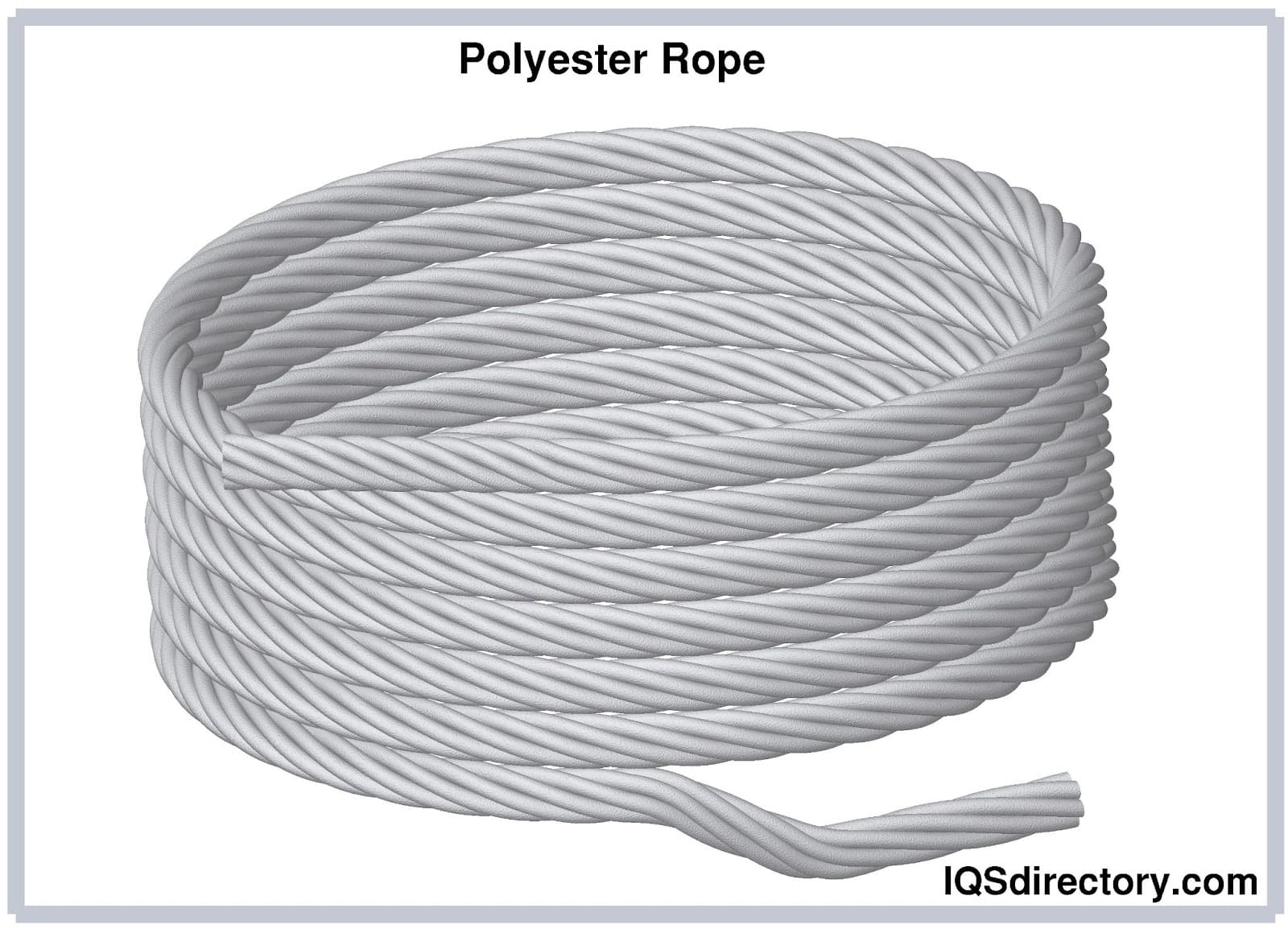
Nylon, also known as polyamide, is a synthetic fiber that can be molded, spun, and machined. It is widely utilized in various fields and applications. The physical and chemical properties of nylon are outlined below.
Nylon is employed in dock lines because it can be dyed in various colors, allowing fishermen to enhance the aesthetic appeal of their docks. Nylon nano filaments have been utilized in fishing lines for many years. Most yacht anchor lines are made of nylon, and paracord, a nylon string, is used in parachute suspension.
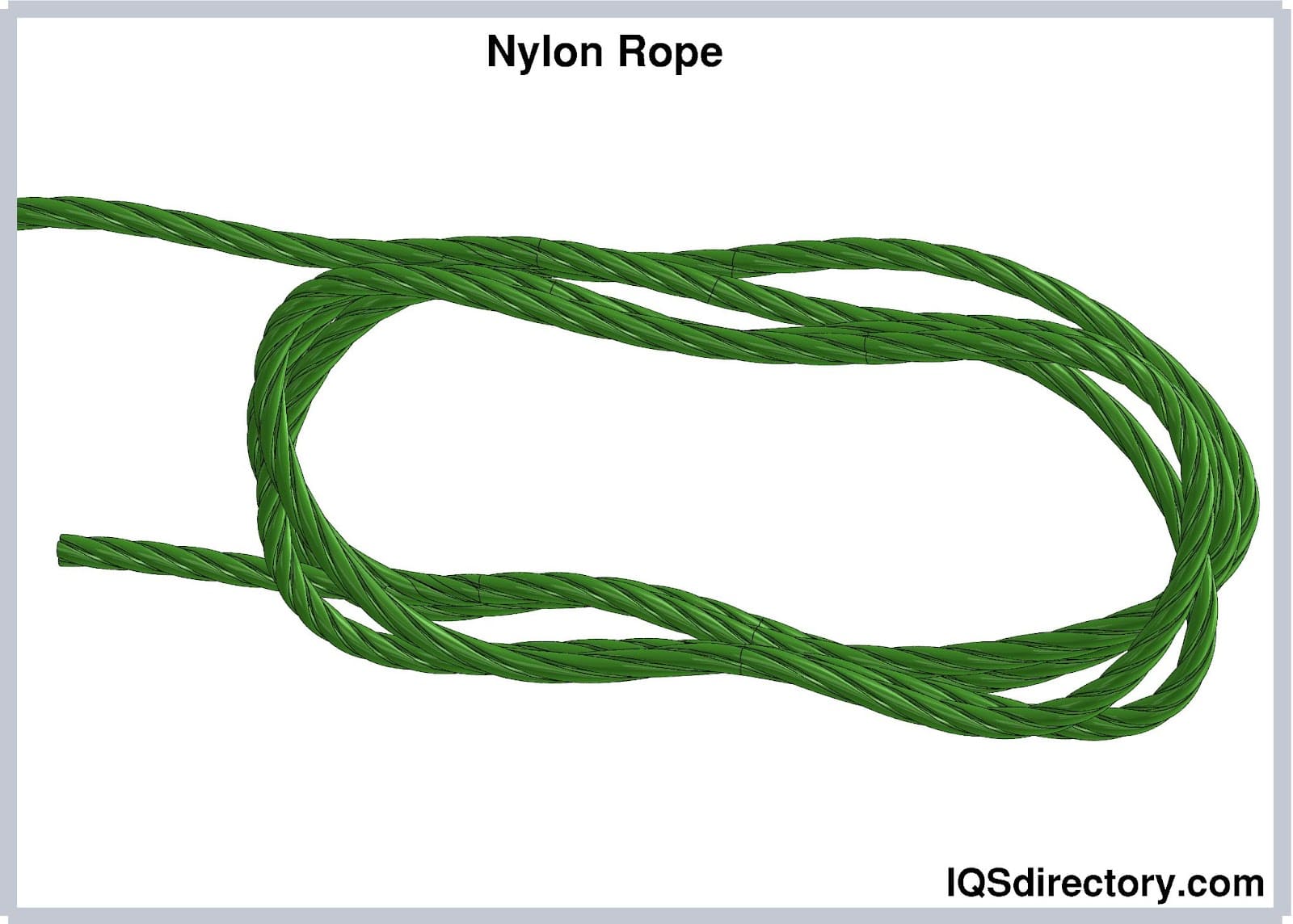
Zylon is currently one of the best synthetic fibers on the market, offering high tensile strength and rigidity. Its tensile strength is 1.6 times greater than that of Kevlar. Zylon is used in a variety of applications, ranging from tennis racquets to construction projects.
Zylon is extensively used in the production of protective clothing due to its heat-resistant properties. It is also utilized in the protective coating of certain wires and in cement for reinforcement purposes. In the sports industry, Zylon is found in bike tires, tennis racquets, snowboards, yacht ropes, and more. Additionally, it is used in cable cover material for welding machines.
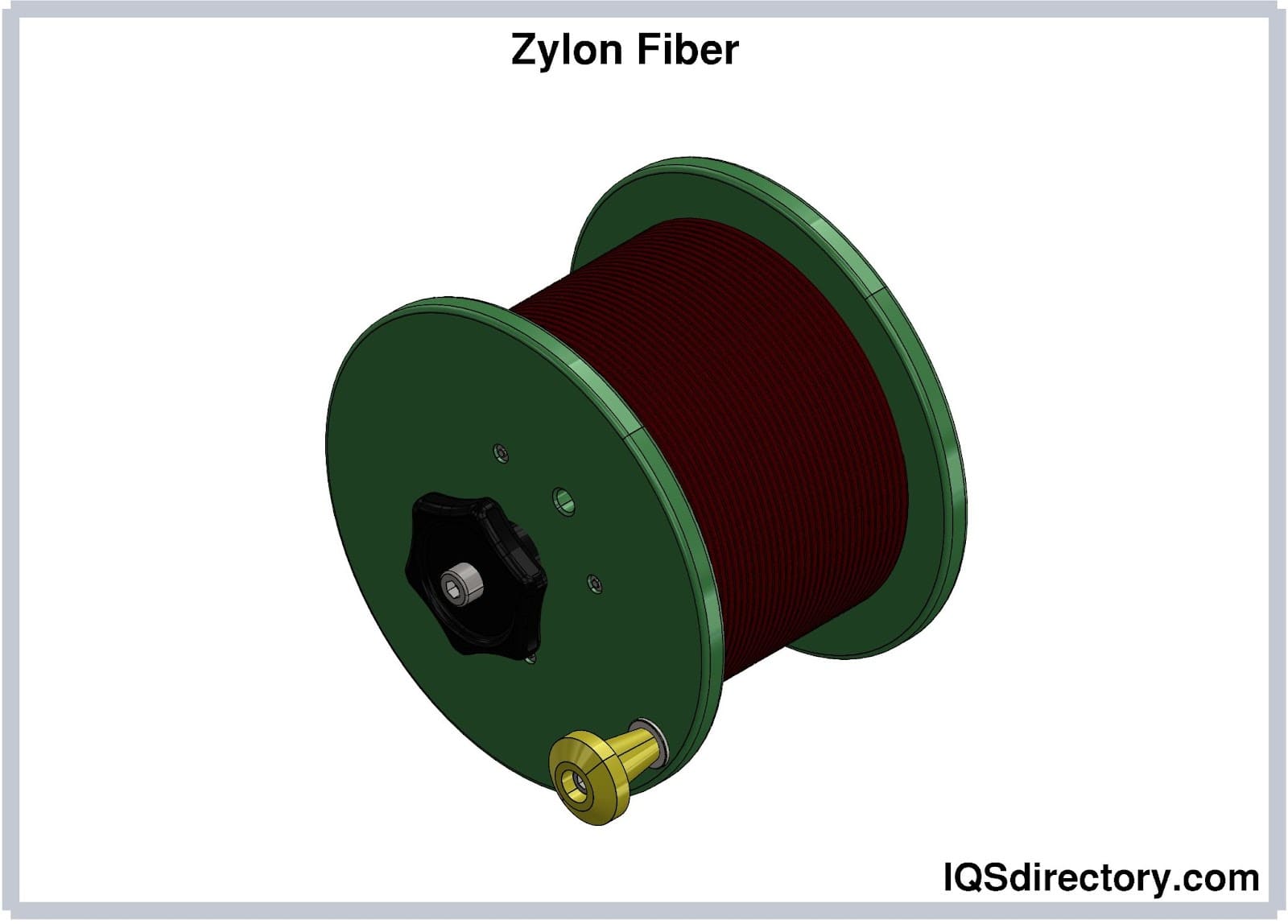
Like Kevlar, Nomex is an aromatic polyamide. However, Nomex, a Meta-Aramid, differs from Para-Aramids in its molecular linkage. The chemical bonding in Nomex is zigzag in composition, resulting in lower tensile strength and rigidity compared to Para-Aramids. Nomex is an elongated fiber that is best utilized in making yarns.
Nomex fiber is well-known for its use in protective gear for firefighters, pilot crews, and in industries where protection from flames and electricity is crucial. Cement and asphalt factories also use Nomex filter media. Gear made from Nomex provides protection against flames, electrical currents, and various other hazards.
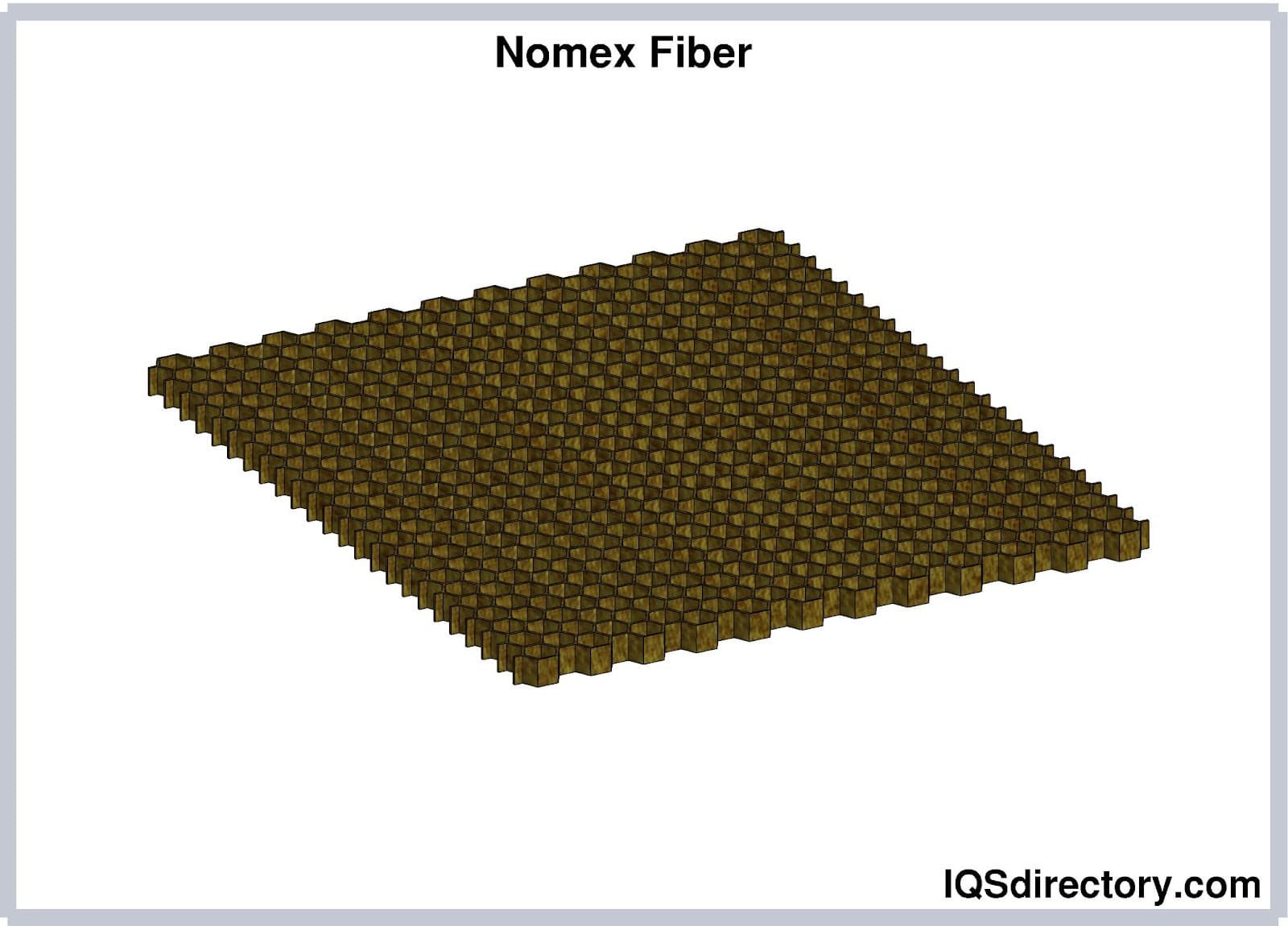
Selecting high strength rope is comparable to choosing an essential piece of equipment and requires careful thought. These ropes are critical for industrial use, such as in slings or pulley systems, and must be robust enough to handle significant stress while moving or lifting loads. When chosen with precision, high strength ropes ensure safety and efficiency in all lifting operations.
Key Considerations for Purchasing High Strength Rope
High strength applications typically utilize synthetic materials, sometimes with protective jackets, that offer the necessary breaking strength, resilience, and durability to manage substantial loads while ensuring longevity. For example, certain grades of nylon start with a breaking strength of around 1000 lbs, whereas other synthetic materials can support loads in the thousands of pounds.
HMPE is one of the most commonly used materials for ropes due to its exceptional strength-to-weight ratio, which is comparable to steel. In configurations like double braid and 12-stranded braid, HMPE stands out as the strongest option available. A 12-stranded braided HMPE rope with a 48 mm diameter has a breaking strength of 165 tons and an impressive operational lifespan of 4000 hours.
While the breaking strength is a valuable measure of a rope's durability, it is not always straightforward to predict due to various influencing factors. Often, employing double-braided or 12-stranded braided ropes can help achieve a reliable safety margin for the breaking point.
In most high-strength rope uses, larger diameters are favored, particularly in lifting scenarios where load capacity is crucial. When selecting rope for pulleys, flexibility and pliability become important, as the rope must navigate smoothly through the pulley system. Double-braided or 12-stranded braided HMPE ropes are excellent options for these applications, as they offer the required strength while maintaining smaller diameters.

A bungee cord is a rope that is composed of two or more elastic strands coated with a woven fabric. It has hooks that are placed on both ends. A bungee cord is also known as shock cord and elastic cord...
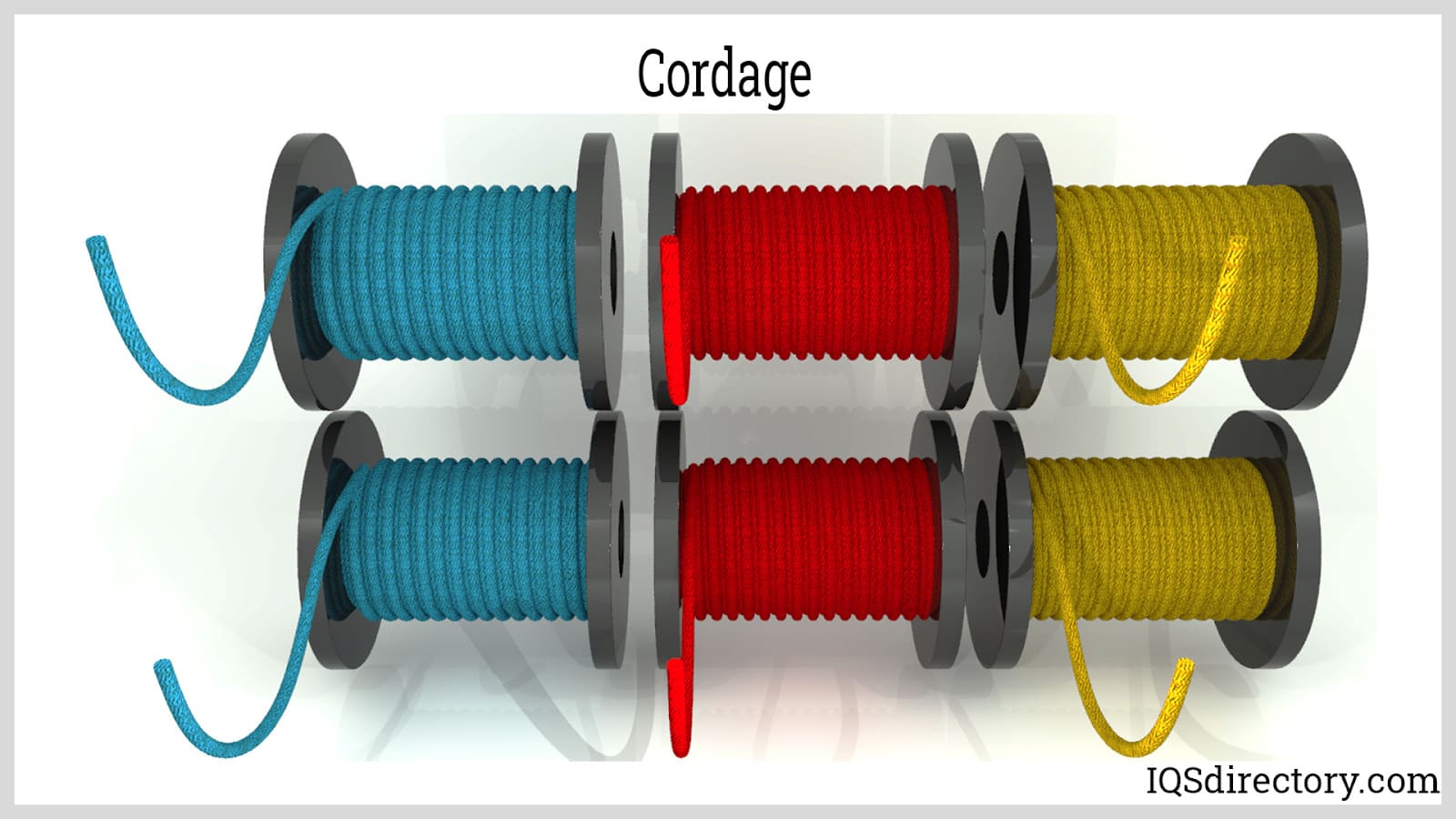
Cordage is a series of intertwined fibers, strands, strings, or fabric that are joined by twisting or braiding to form a larger more formidable whole. The combination of the materials makes the final, larger strand stronger than its individual pieces...
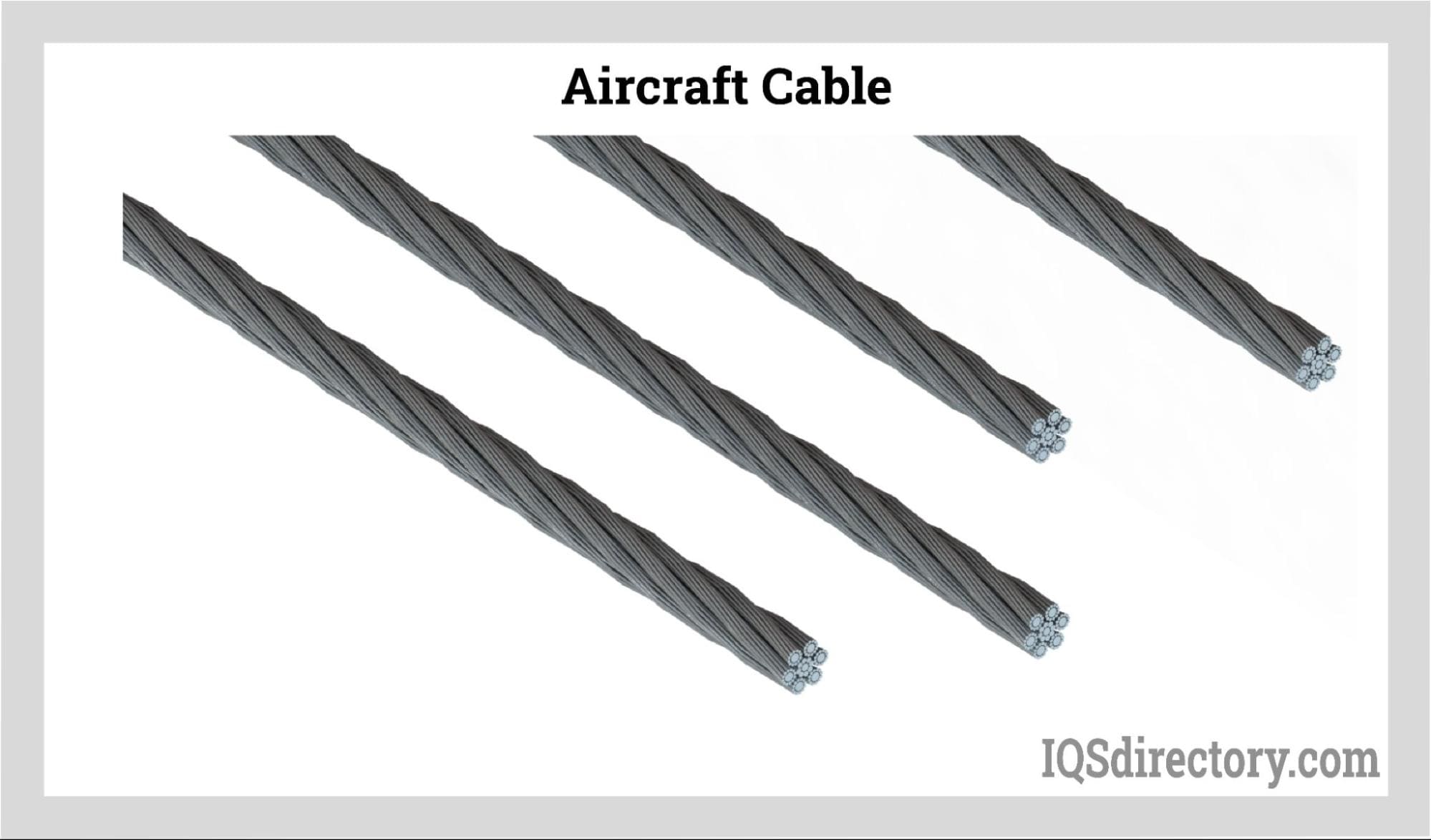
An aircraft cable is a style of highly durable cable that is used for aircraft flight controls and other applications and is differentiated from normal cables by its diameter, stranding, and wires, which provide...

Electric hoists are material handling equipment used for lifting, lowering, and transporting materials and products. They are powered by an electric motor and have a controller to adjust the lifting parameters...
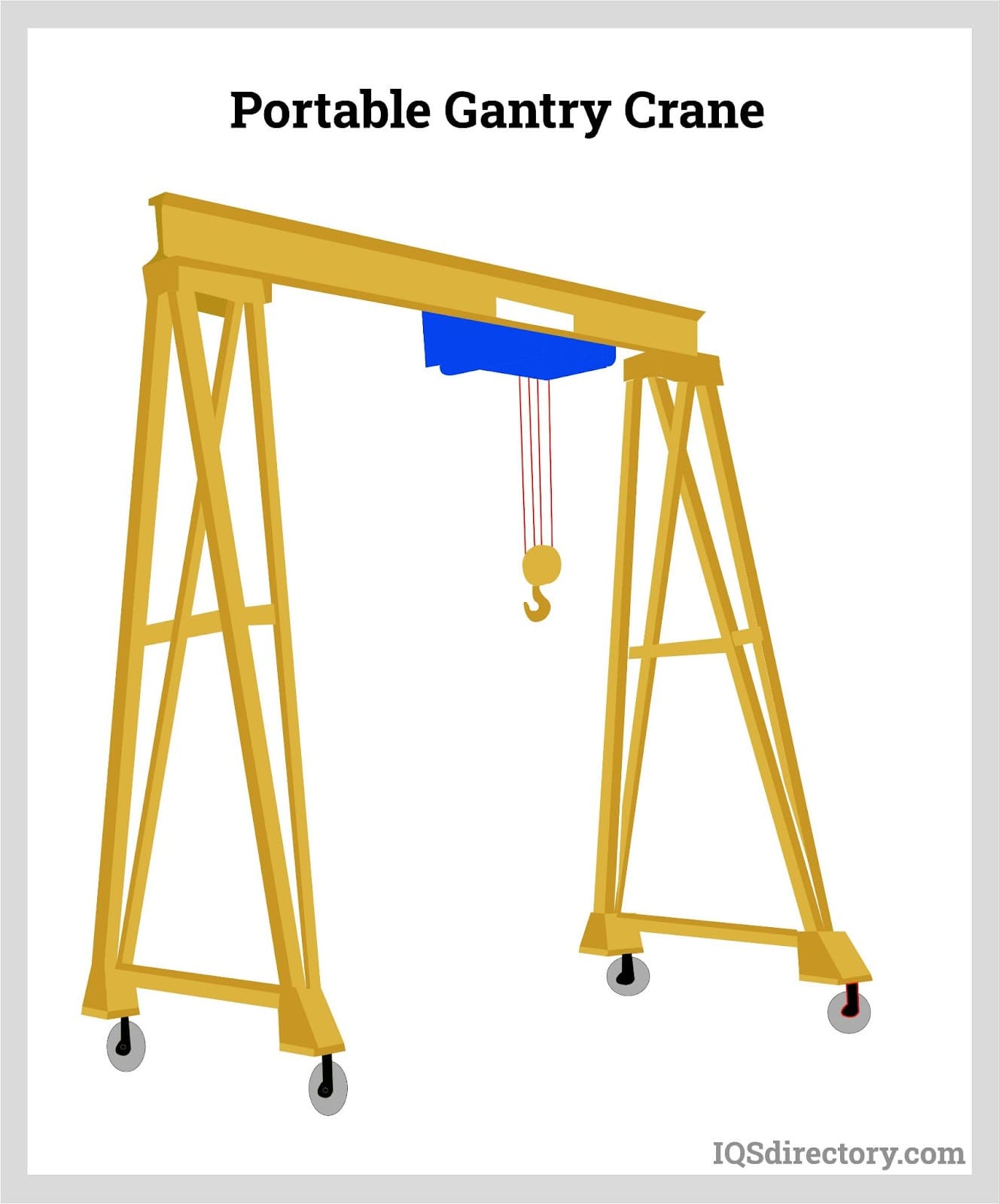
A gantry crane is an overhead crane that has an overhead beam supported by freestanding legs and moves on wheels, a track, or rail system carrying a bridge, trolley, and hoist. Workshops, warehouses, freight yards, railroads, and shipyards use gantry cranes as their lifting solution as a variation of overhead or bridge cranes...
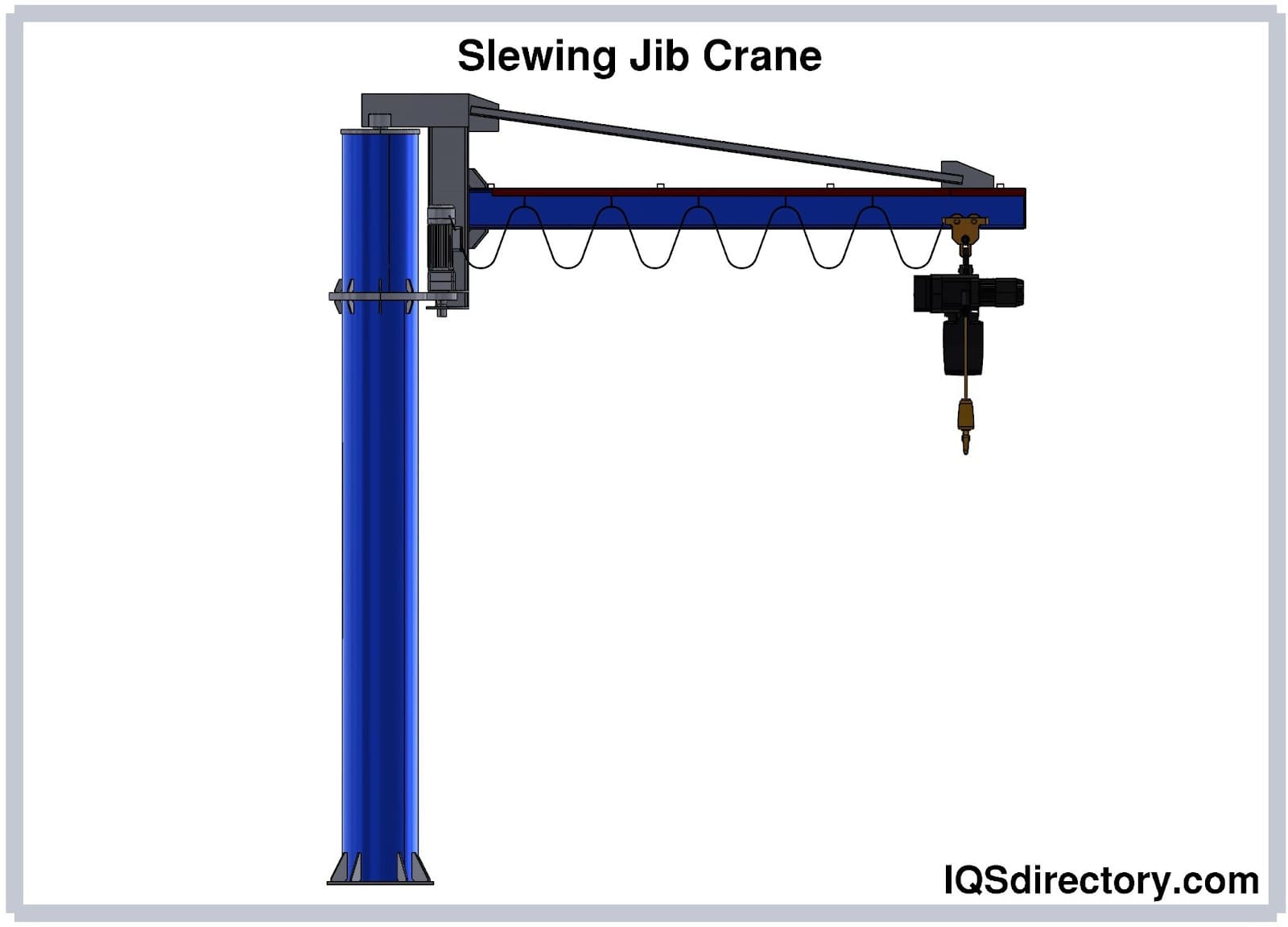
A jib crane is a lifting device with an arm or boom that extends off the main body of the crane to provide extra reach and has a lattice design to lower the weight added to a load. The design of jib cranes allows them to work...
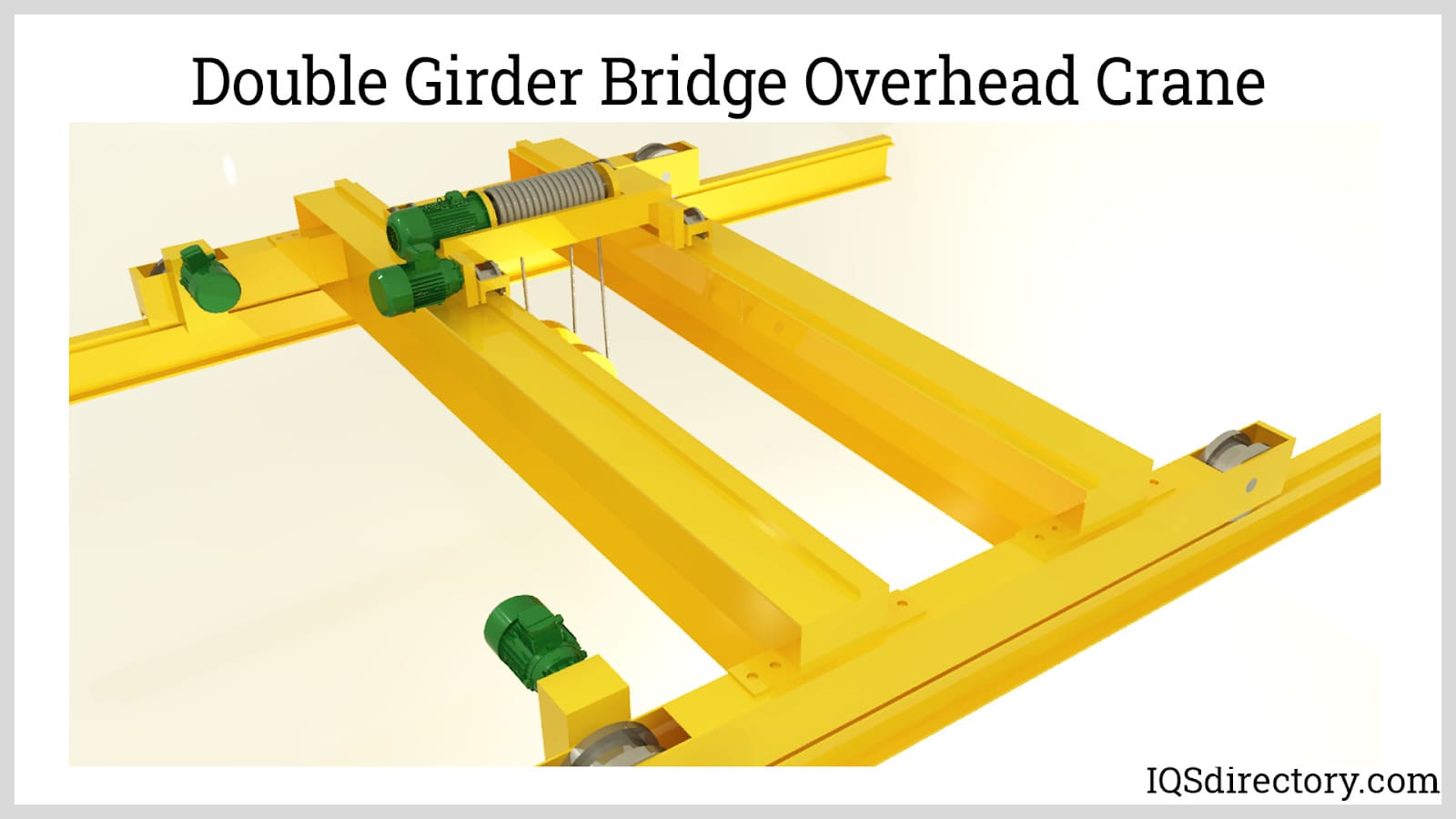
An overhead crane is a type of heavy duty machinery that is capable of moving extremely heavy loads and equipment from one location to another in a safe and precise manner using the overhead space of a manufacturing facility. Due to the nature of the work they perform...
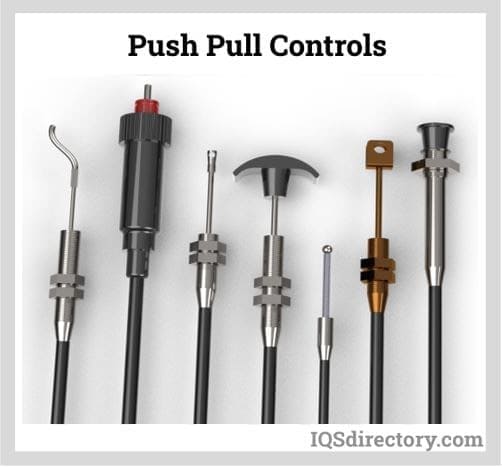
A push pull cable control is used for the transmission of multi directional precision control of mechanical motion. The many varieties of push pull cables or controls are adaptable to a wide range of applications and...
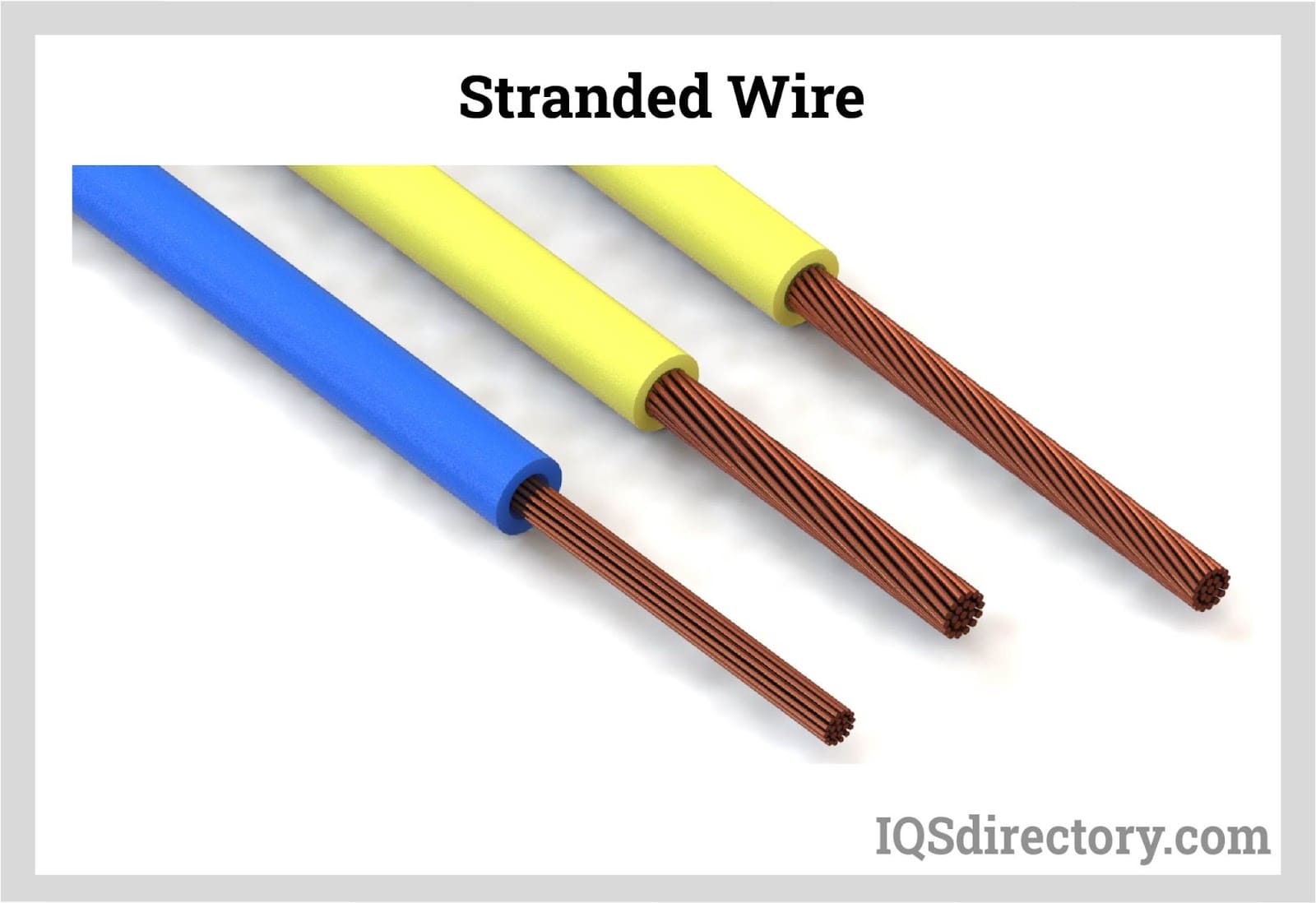
Stranded wire refers to thin bundled up wires that are compressed and covered up in insulating material. Stranded wires are more flexible thus making them very ideal for joining electronic circuit components in confined spaces where their bending...
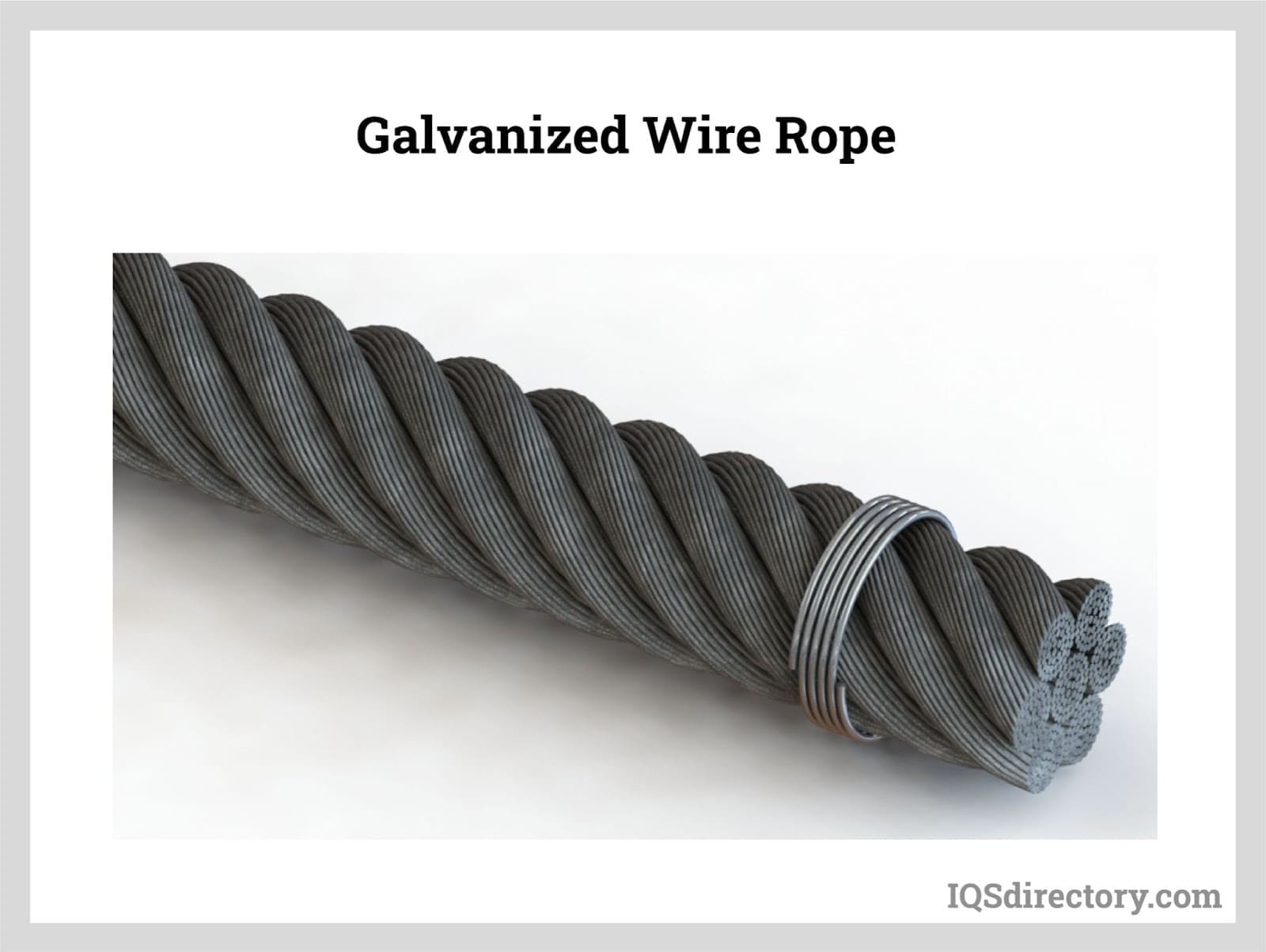
Wire rope is a collection of metal strands that have been twisted and wound to form the shape of a helix with the purpose of supporting and lifting heavy loads and performing tasks that are too rigorous for standard wire...

A wire rope assembly is composed of wire rope and end fittings, terminals, or lanyards that are attached to various parts of the wire rope such that the assembly can be used to lift, hoist, and move loads. The various types of...
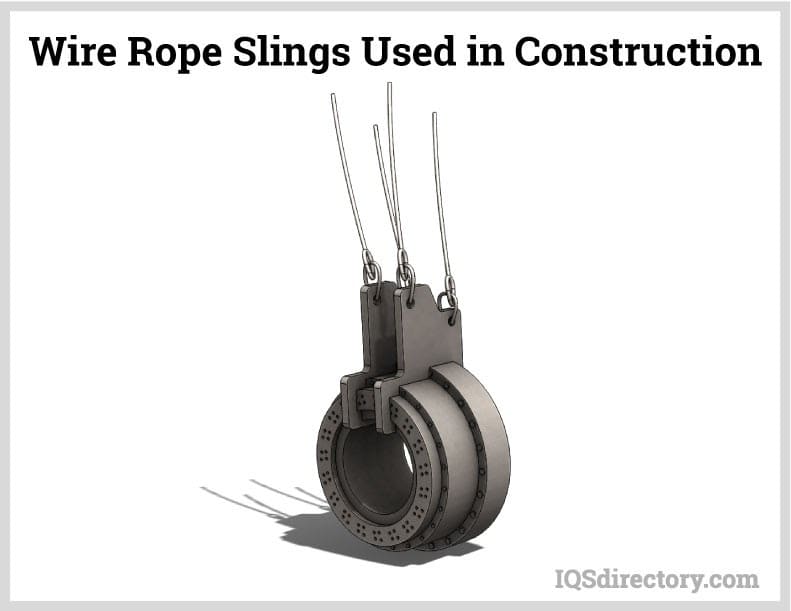
Wire rope is constructed of multiple strands of wire that are twisted and braided together to form a spiral design or helix. Once the separate wires are shaped into a solid form, they become a single wire with greater strength because...